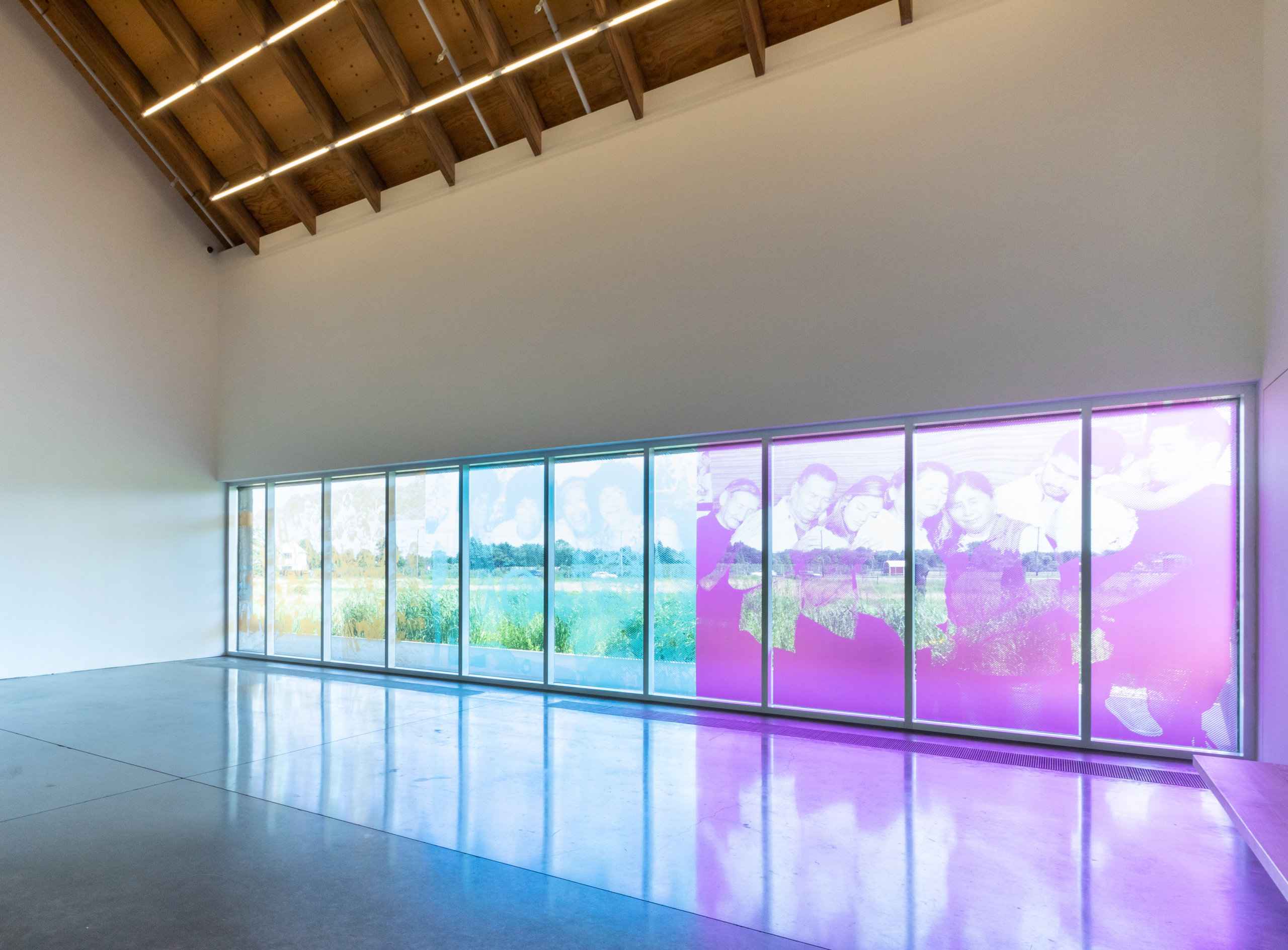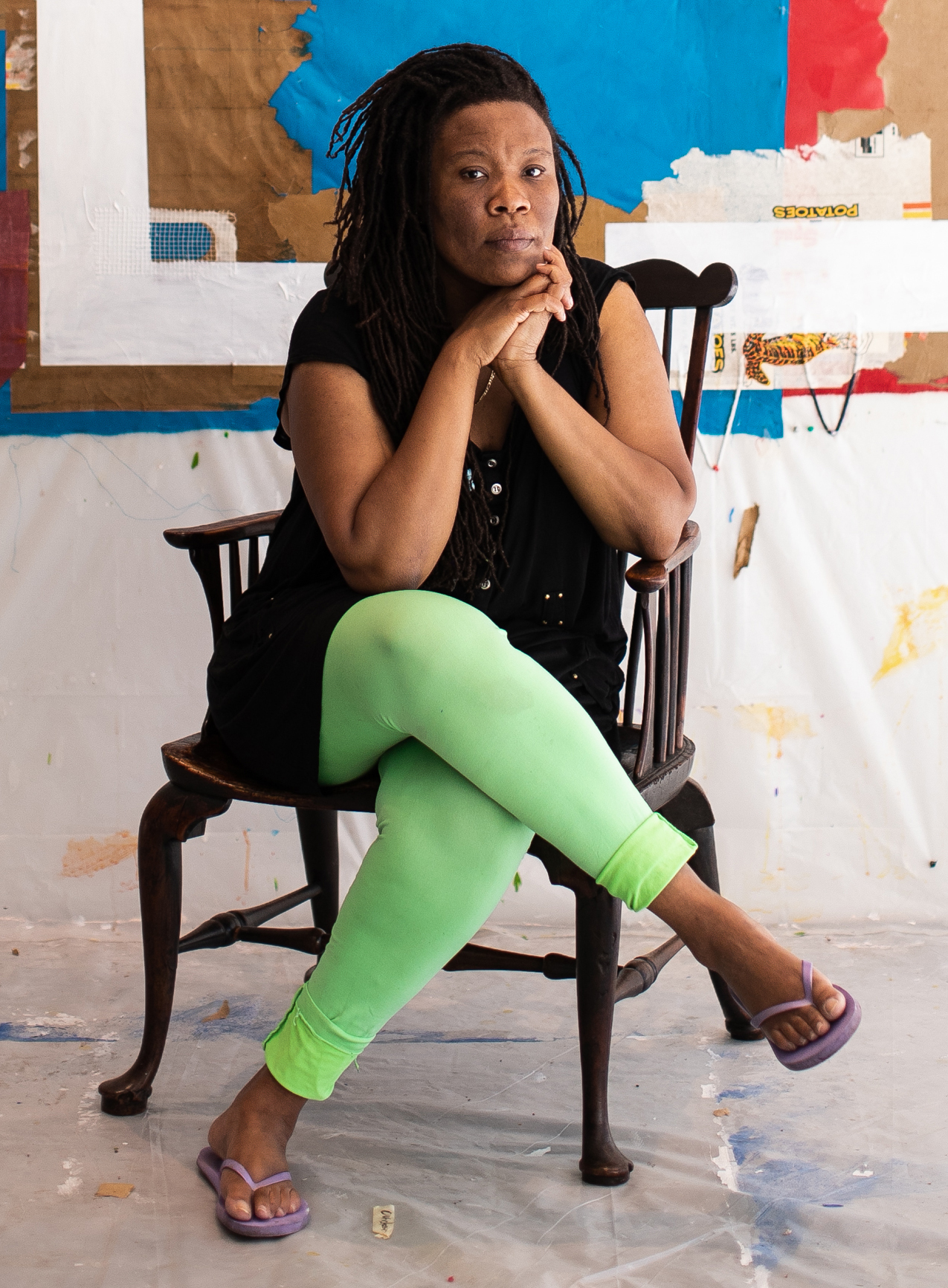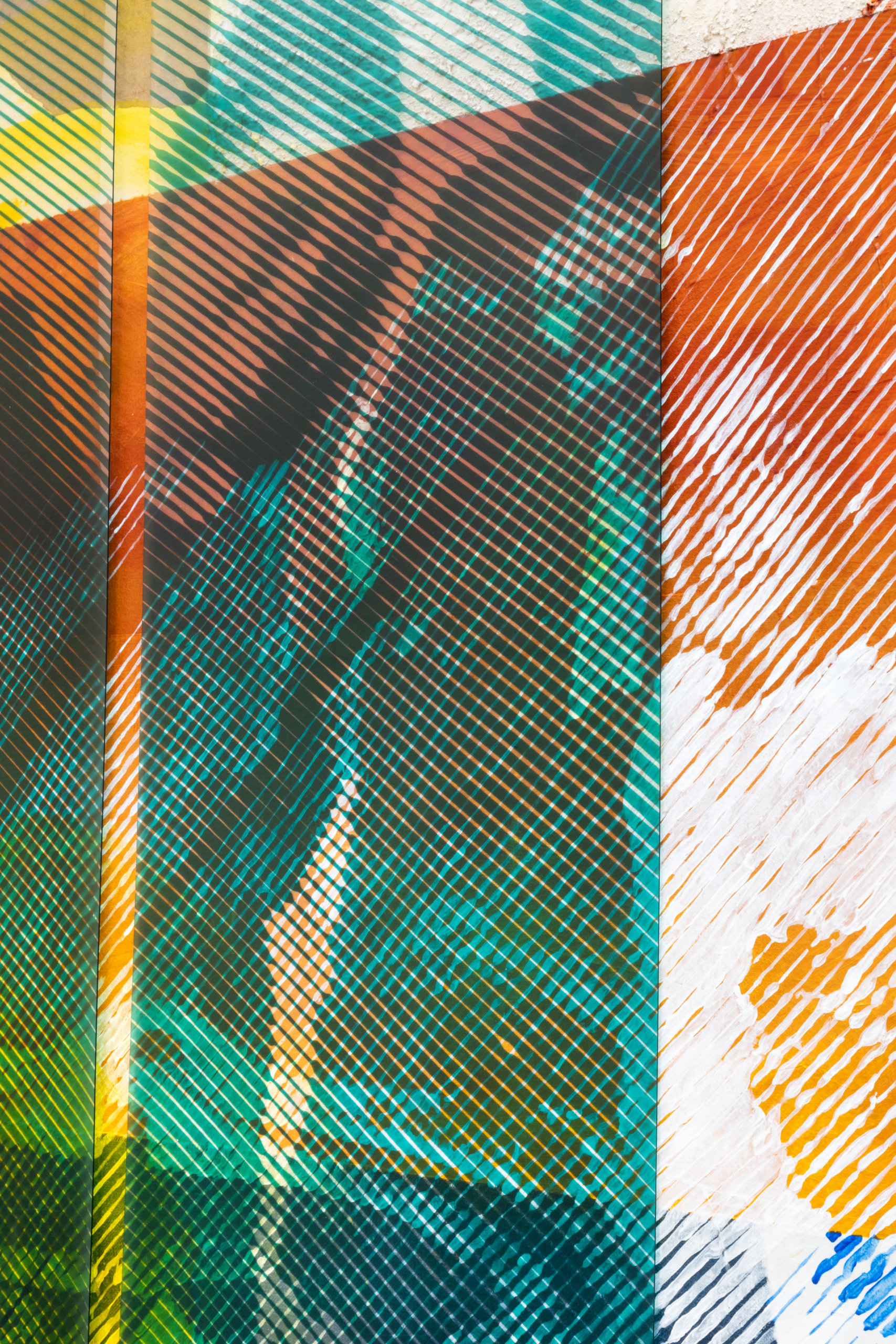Tomashi Jackson Gives Voice to Communities of Color at Parrish Art Museum

At this moment, passersby on their way through Water Mill are likely taking notice of the towering sculptures placed throughout the Parrish Art Museum’s Field of Dreams, wondering what other intriguing works of art await them inside the long barn-shaped building. Maybe, hopefully, they’ll follow their curiosity inside, where they’ll find breathtaking works of art, yes, but also something so much more—something that explores the lives of those who’ve been forced to give up their land, their families and their freedom to build a summer paradise that has been anything but welcoming to them.
On view through November 7, 2021, Tomashi Jackson: The Land Claim is a multi-part exhibition of Cambridge-based artist Tomashi Jackson’s latest series of paintings, as well as sound, photography and archival materials that explore the East End’s marginalized communities of color, namely the Black, Latin and Indigenous communities. The varied media on display open up a much-needed discourse around collective memory and historical narratives of labor, educational access, transportation and land rights, shining a harsh light on the systemic racial segregation and discrimination that plagues the area.
Jackson’s journey into these topics began in January 2020, when she started conducting in-depth interviews with members of the East End’s Black, Latin and Indigenous communities. She originally planned to focus her exhibition largely on issues of transportation and precarity in transit—drawing parallels between the Pinochet regime’s open-air kidnapping in Chile and gratuitous traffic stops of Latin community members that lead to ICE detentions and family separation.

However, an unplanned conversation with Kelly Dennis, an attorney specializing in federal Indian law and secretary of the Shinnecock Council of Trustees, opened Jackson’s eyes to the continuing history of land appropriation and theft in the Hamptons, causing her to widen the scope of her intensive research project and decide upon the exhibition’s name.
Working through the pandemic’s shelter-in-place orders as an artist-in-residence at The Watermill Center, she conducted online interview with Donnamarie Barnes, curator and archivist for Sylvester Manor Educational Farm on Shelter Island; Bonnie Cannon, executive director of the Bridgehampton Child Care & Recreational Center; Steven Molina Contreras, a lens-based artist; Shinnecock Indian Nation member Jeremy Dennis, a fine art photographer; Dr. Georgette Grier-Key, executive director and chief curator of the Eastville Community Historical Society; Minerva Perez, executive director of OLA of Eastern Long Island; Tela Loretta Troge, a Shinnecock attorney and counselor at law; and Richard “Juni” Wingfield, a long-time community liaison for the Southampton School District.
Organized by Corinne Erni, senior curator of ArtsReach and special projects, with curatorial fellow Lauren Ruiz, The Land Claim unfolds across multiple galleries as well as outdoors. With the help of Martha Schnee, K. Anthony Jones and Michael J. Schumacher, Jackson processed her interviews and synthesized them into “The Interviews,” a multi-channel sound work composed exclusively of audio from said interviews that can be heard outside as visitors walk into the Parrish’s main entrance.
Once inside, the debut exhibition includes “Vessels of Light,” a photographic composition comprising three enlarged photographs that extends across the 32-foot, south-facing window. The source images, provided by conversants, depict familial moments within the three communities that Jackson worked with most closely: Shinnecock children dressed in regalia and gathered at the Powwow, female descendants of a Southampton family of Black migrant farm workers and an immigrant family from El Salvador in a tight embrace. The adjacent painting “The Three Sisters” incorporates images of intergenerational groups of women, addressing the importance of matriarchy in these communities.
In the Robert Lehman Foundation Gallery are six large mixed-media paintings that comprise locally sourced fabrics, potato bags, ground Shinnecock wampum shells and soil from the Parrish grounds on slanted wood frames hand crafted by Ruben Palencia. Embedded in the compositions are images that act as snapshots into the lives of Black, Latin and Indigenous families and community leaders, one of whom is depicted triumphantly fending off a bulldozer being used to encroach on Shinnecock territory (“Among Protectors”).

“I’m increasingly doing my best to listen with my eyes for what (my paintings) need and decentralizing my own aesthetic compulsions,” Jackson says of her The Land Claim compositions. “A lot of what excites me aesthetically are issues of discipline, so I love that the paintings make arguments for sculpture and that the paintings employ printmaking. … I see this kaleidoscope of humanity all through those disciplinary concerns that I have and are deeply ingrained in me.”
The final room in The Land Claim is a gallery turned study room, where visitors can delve into Jackson’s research notes, look at archival photos and connect with the enlarged conversant portraits drawn by catalogue contributor Martha Schnee.
The exhibition officially opened on Sunday, July 11, with a panel discussion featuring Jackson, Juni Wingfield and Tela Loretta Troge discussing the history of exploitation that East End communities of color have experienced since colonization. Additionally, Jackson read interview excerpts from the 96-page exhibition catalogue that’s scheduled for fall 2021 publication. It includes new scholarship by Corinne Erni and artist Eric N. Mack, interviews with a cohort of Jackson’s research collaborators and drawings by Martha Schnee.
“I’m incredibly humbled by the trust given to me by the nine conversants who not only shared with us their stories and allowed us to transcribe them and share excerpts in the coming monograph … but also share the sounds of their voices that can be heard outside and images from their own collections,” Jackson says. “What I hope for this show is that the people who have contributed to the show have free rein in this space to facilitate, activate, advocate and collaborate, to continue to tell their stories, not just for the sake of consumption while hoping that some people who have a hard time hearing finally hear something. I hope this space is useful to the people here who have generations and generations tracing back 3,000 years, in some cases. I hope this space is useful and meaningful to them, and they’re doing better … if they actually are considered … then I am not at all worried about how it will be interpreted by everyone else. … I hope that the people whose narratives and histories are imbedded in this work feel that this space is actively useful during the run of the show, and I think that those of us who are not of those communities have opportunities to uplift, participate and be better for that.”
The Parrish Art Museum is located at 279 Montauk Highway, Water Mill. To learn more, visit parrishart.org.



